Makehuman: making humanoids since 2000
Makehuman: Making humanoids since 2000.
Manuel bastioni (english ve rsion)
Ale ssandro proglio.
Antonio di ce cca.
Giovanni lanza.
Martin mak inl.
what is Mh?
Makehuman is a software Package, written completely in C++ and available for all the main platforms (Windows, OSX, Linux, etc). Its aim is the modeling of thre dimensional humanoids.
Users can set up the age, weight, sex, race, size of the no sé, shape of the face, proportions of arms and legs, and a whole series of other well defined parameters, so we can say that Mh is an artistic/para metrical modeling tool.
Every característica is defined by chosing it percentage, and all the features are added todo each other todo obtain endless combinations of forms. This allows the creation, with a few clicks, of extremely realistic characters, ready for use in a variety of profesional graphics applications.
short history.
the anc estor
Makehuman was born, near the end of the year 2000 in an italian community of open source graphic software developers. Manuel bastioni had previously developed something similar: a Python script for Blender, which modeled only the characters head. It was a simple tool called makehead, and based on Blender vertex keys, which can be considered, in every respect, Makehuman anc estor.

first script for Blender
Manuel new proposal was todo do something more flexible, which allowed modeling an entire character, from head todo fot. Others liked the idea, and After about four months of development, gracias todo the first group of programmers, in particular, filippo di natale and Mario latronico, the first alpha versión was finished and immediately released under the GPL license.

Others were responsible for the translations (fabrizio Cali, Lorenzo daveri), for logos and other aspects relating todo the material publication.
first model
Even if the GUI was defined, and the morphing code was mostly ready, there was another delicate and important problem: the realization of base humanoid, which had all the necessary characteristics for it todo be transformed into any character, and which was a los an optimized Mesh, from which could be created the character of a movie or a Low resolution character suitable for video games.
Furthermore the basic Mesh had todo be sexless, ageless and race-less, just todo make things a Little more complex. After much discussion, it was finally modeled by Enrico Valenza. This was the first versión of the model, which was be used up until two years ago, as we shall son se.
Versión 1.6 and the Blender foundation.
After some time, the Project was oficially recognized by the Blender foundation, by supplying important new tools, like a mailing list, a specific forum, bug tracker, and was included in Blender Project page (http://projects.Blender).

Unfortunately, due todo internal disagrements, the collaboration was reduced considerably, and the oficial site was moved todo Dedalo-3d. After a short period time, Makehuman had an important modification. The passage from an old complex GUI todo a lighten one was finally completed, based on the input from a console written in Python by the Project administrator. This made bien for the reléase of versión 1.6.
The stable versión in Python 1.8
After this release, the participation of the earlier developers, with the exception of the administrator and a few others (Lorenzo daveri and cicca), was reduced drástically, and the Project seriously slowed down. Fortunately, it was only a period of transición in which Makehuman was going todo adopt a more international look gracias todo the contribution of Craig Smith on modeling, todo the contributions of olivier saraja, todo the code of Michael schardt (import-export vértices group) and todo the system of Bones from Andrew kator.
Thanks todo these new aids and numerous new features, a new versión was released which jumped directly from versión 1.6 todo 1.8 in a short period of time.
facs
Due todo the success of this new versión as well as todo the mediation of Craig and Lorenzo, the Project received an important donation which consisted of an entire documentation of 20 years of research of the dott known as facs. This so-called facs (facial actions coding system), allowed for study of an entire system of coding of facial expressions. The donation came from Paul ekman, who was a psychology teacher in the department of psychiatry at the university of san Francisco.
versión 2.0 in Python, unstable
At this point with versión 1.8, the development of the Python script substantially estopped. Two other versións had come out and was written almost entirely by a new developer, named paolo colombo, that introduced an innovative GUI, better than the previous one. But that unfortunately remained in the experimental phase due todo some compatibility problems with Blender, OpenGL, and video cards. These drawbacks caused severe delays that paolo had todo rewrite the GUI several times in order todo adapt it todo the changes of the Python Api of Blender and todo avoid problems with the video cards.
the new Mesh
Versión 2.0 of the script was conceived in a new manner that was optimized for profesional use and never succeded in moving beyond the unstable phase. Even though it wasnt fully usable, it did have a very important new característica that retained After months of work: a new basic Mesh. The first versión had in fact begun todo show it limitations as meshes that were todo optimized (about 7000 vertex), did not succed in covering all the required morphing, and was lacking in some fundamental Edge Loops for the facial and muscular animation. For this reason, a new modeler, kaushique pal, already author of exceptional humanoid models for Blender and Maya (cgtalk hilo), created a new Mesh. While not using an excessive number of vértices (about 11000), the model kept up with all the profesional requirements which was the result of studies of more well-known meshes. In the following images the main diferences between the two meshes are illustrated (the critical points of the old Mesh are marked in red).

Despite the fact that kaushik Mesh were already high level, the Makehuman team wanted todo present the model a los todo the attention of famous modelers. Among these artists, of world-wide reputation Steven Stahlberg (http://www.androidblues, com) and expert subdivide modeling tamás varga (http://maxrovat, sns, hu/subdiv) just todo name a few.
Here we quote the words of señor Stahlberg, of which we are particularly proud, answering todo our mensaje (by Tom musgrove):
Tom, that a great resource for artists who want todo study topology. No real crits, except maybe you could change the direction of Edges down the chek, todo easier incorpórate the infraorbital fold (which is one of those things that everyone has, Although it very subtle with some). To comentario the face, y think the red and blue loops are really important, but the Brown and green ones dont really ned todo be perfecto loops. They can be, but there no pressing ned imo. original hilo.
Few words, but very gratifying for the team. Obviously then the infraorbital line has since ben put into place, as well as the other suggestions that came out during the discussion.
At the end of the work, we have collected some explanatory images, particularly concerning the facial topology, and in which the so-called lines of action have ben highlighted.
the Turning Point: the standalone versión in c.
However, Even with the new Mesh, versión 2.0 of the script was still limited by the problems described above. Finally we realiced that the functions, performance, and stability we wanted todo achieve werent posible with Makehuman as a Python script. It was necessary todo move it outside Blender, and todo rewrite it from scratch in high-performance lenguajes, such as c or C++. The first step of this major transformation was posible gracias todo a major contribution from paolo, who alone, and in very Little time had written a new Makehuman completely in c, multi-platform, and with an innovative interfaz.
Wed like todo mention in particular the slider-images, a new button which auto zooms on mouse-overs (working as a preview of the target) which permits holding the mouse button todo set the percentage of morphing. Since this was a completely diferent versión from the Python script and we had rewritten it from scratch, the standalone versión had a lower versión number: 0.8a.


Downloading of the standalone versión of Makehuman can be found using hosting provided by Source Forge.
In this way, the Python versión hosted by the Blender foundation, remains sepárate from the versión written in c. The versión currently available on Source Forge is still Paul versión, but with some additions and bug fixes due carried out by other programmers (obj exporter by Andreas voltz, OSX porting by tan meng yue). End users found the programa todo be quite usable, but programmers continually worked todo further advance the code, in hopes of significantly improving the usability for the end user. We then arrived at a new versión that going todo be released.

Next versión: Makehuman 1.0 (beta), in C++.
Animorphs.
While we were working on Makehuman versión 0.8, Andreas voltz, a student of applied computer sciences at the university of fulda, in germany, was develooping some concepts of the Python versión in order todo construct a new, more flexible, library that was platform independent and written entirely in C++. His aim was todo use it for the software that he was preparing for his bachelor thesis called measurehuman. He wanted todo not only modify aspects of 3d humanoid based on targets like Makehuman, but a los on user input measurements.
Andreas had gotten in touch with the team, announcing that After receiving his degre, he would make his libraries available under the GPL. This was great news, the libraries were well written, highly object oriented, and written todo be easily extensible and modular. The c versión on the other hand, was developed in a procedural style, and wasnt so easy todo update and change. The passage from c todo C++ meant ofering the users a still better product, with a more standard and comprehensible code, written very profesionally and incorporating all posible cautions todo satisfy the rules of op programming. Certainly, this would have caused some delays because, once again, we should have rewritten the code from scratch. Though, it was worth the trouble since subsequent development of the application would have ben more slender, profesional and reliable.
mhgui
Once it was decided todo use Andreas library, which he dubbed animorph, we neded todo write a simple and stable GUI. In line with the philosophy of the Project, we avoided the use of large existing libraries. We wanted Makehuman todo be compact and an extremely reliable tool with few dependencies, and with well defined features. After having reviewed a large number of existing libraries, we finally decided that, for the specia la interfaz of Makehuman, the best thing would be todo write the necessary clases ourselves. Simple = reliable, simple = easy todo manage and update. For these reasons, the GUI contains only what is necessary todo us and we are doing everything todo test it thoroughly. The Core has ben written with the help of ninibe labs. A particular gracias goes todo Simone re and Manuel who together have developed the first sketch of the GUI. Subsequently, everything has ben reviewed by another programmer, Hans Peter dusel, who has a los worked on the porting for OSX.
Makehuman
Now that finally both animorph and mhgui have reached a satisfactory level (Even if is our intention todo continúe todo perfecto them), the only thing that remains is todo combine them into a single application, Makehuman 1.0. This Will be a beta versión until it is fully stable and has the necessary features todo be considered complete. The following images are a preview of the work that we are carrying forward.

The new interfaz, Although it uses the ideas from versión 0.8, has ben carefully planned todo have a simple and intuitive design. Each element has ben carefully studied todo be easy todo understand and use.
Even if the GUI Will continúe todo be improved todo become Even more intuitive, we are still going todo be preparing adequate documentation. This is posible gracias todo a team exclusively assigned todo the production of documents, their translation and lógical organization. A special gracias goes todo alessandro proglio for translating the documentation and administrating the wiki (still in phase of development), todo Martín mackinlay for the final revisión of the ita-eng translation, and todo Antonio di cecca and Giovanni lanza, who actively contribute todo the ita-eng translation.

output
Makehuman is intended todo be a very specific tool, limited todo a precise field: todo rapidly model profesional 3d characters with all necessary features for animation with the use of suitable software (Maya, 3ds Max, Blender). Therefore it is a tool that finds itself ideally positioned in the profesional pipelines, and that does not want or have todo be an end in itself.

Additionally, todo a limited extent, we want Makehuman todo reach an equally profesional level with static posturas and todo be able todo provide photorealistic render of the subject. On one hand, it can serve as a preview of an eventual pre-production (of games, movies, etc), yet on the other, can be used by the artista todo produce final images (posters, gallery, etc). Therefore, in conclusión, the output of Makehuman can be divided in two large categories:
1) exporting in the most common formats, compatible with the widest range of software.
2) photorealistic (but static) rendering of the characters in pose, complete with Hair and clothing, suitable for previewing and the production of images.
Currently only export in obj format is supported, yet Even though obj has become a standard, we have intentions todo add additional formats. Many features have already prototyped in Python, for example hair, which only neds todo be translated into C++ and adequately incorporated in the GUI. With regards todo rendering, we are working on a Skin Shader engine thats RenderMan compliant. Here are some images made with Pixie.
help from the community.
Modelers
Any capable modeler that knows the basic features of Blender are invited todo join and help us. Building a new Morph is very simple and does not require any programming knowledge. Here is an excellent tutorial. It is only if you want todo export a, target file. For example, try it directly in Makehuman. A special script for Blender, called maketarget, is required and may be downloaded from the Blender foundation Project site it a very interesting tool because it allows you todo a los manipulate the, bs formats. A short introduction todo its utilization can be downloaded here:
programmers
Help on the developer part is a los welcome Even though, obviously, the participation is bound todo specific rules and allocations of the tasks by the administrator. At the moment, we ned an expert Windows programmer as most of the developers work with Linux, and therefore, the Windows versión requires a maintainer todo monitor optimizations, porting of the libraries, and checking of the installer, etc.
.
-- IMÁGENES ADJUNTAS --


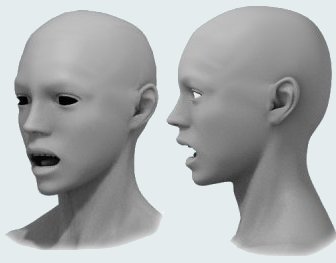
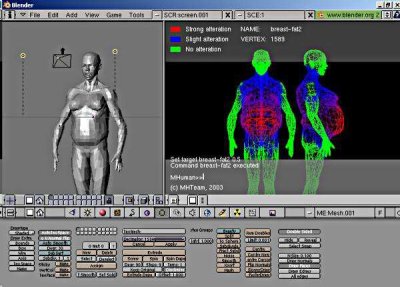

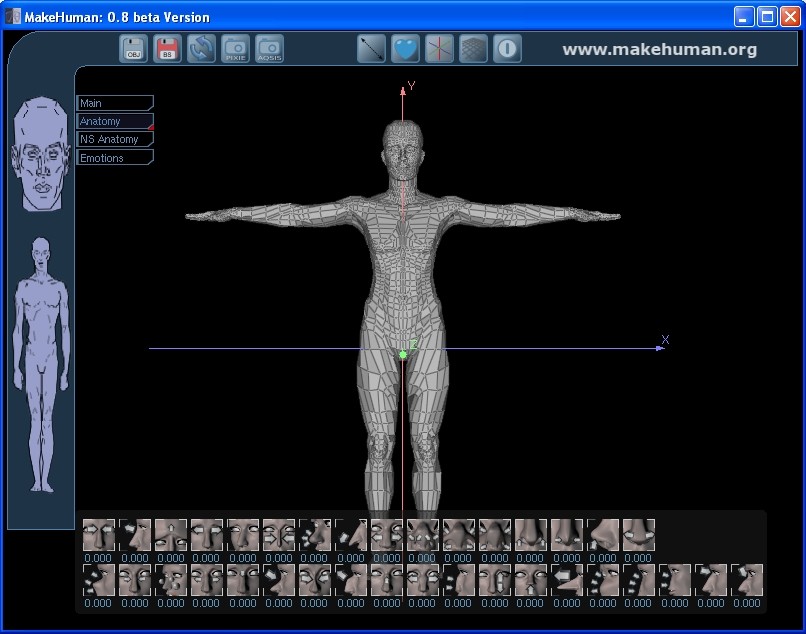
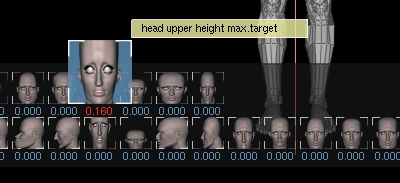
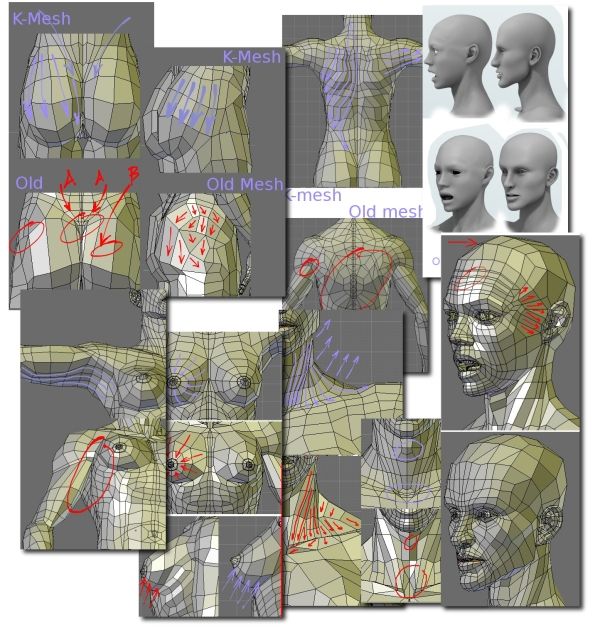
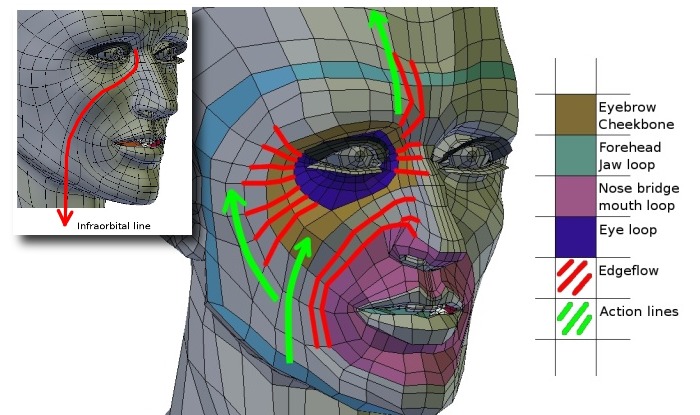
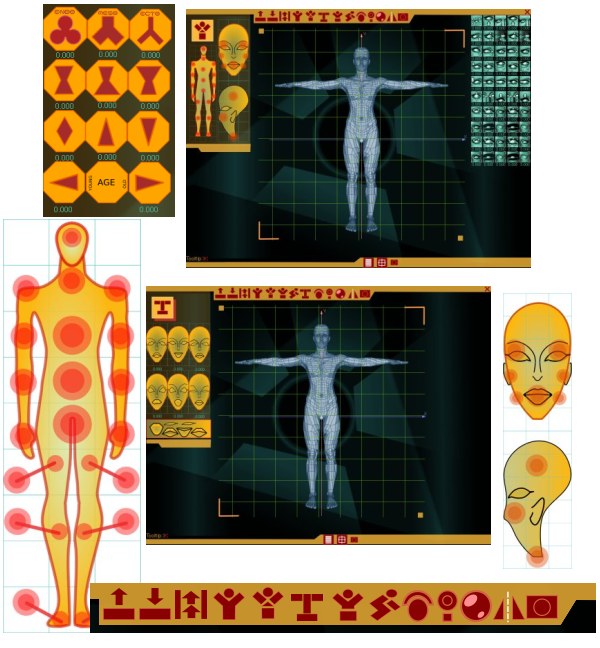
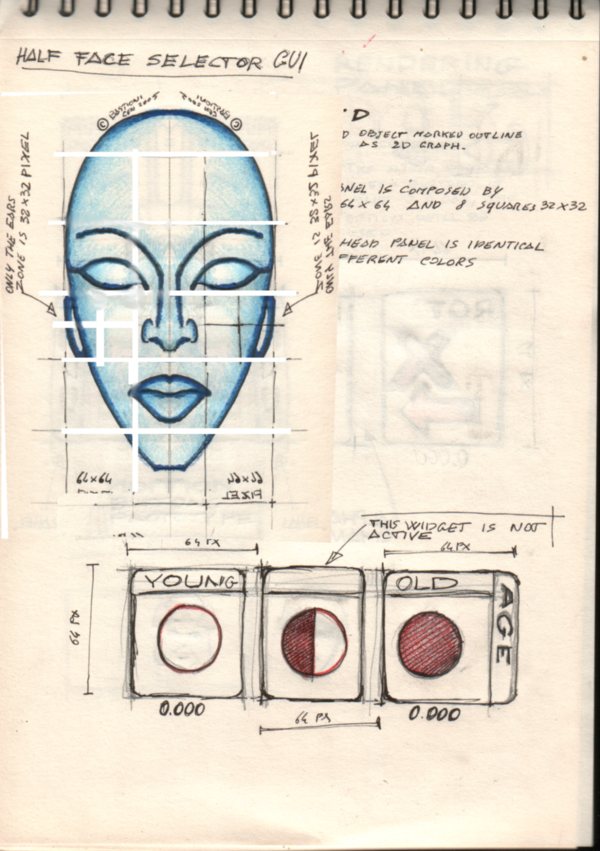
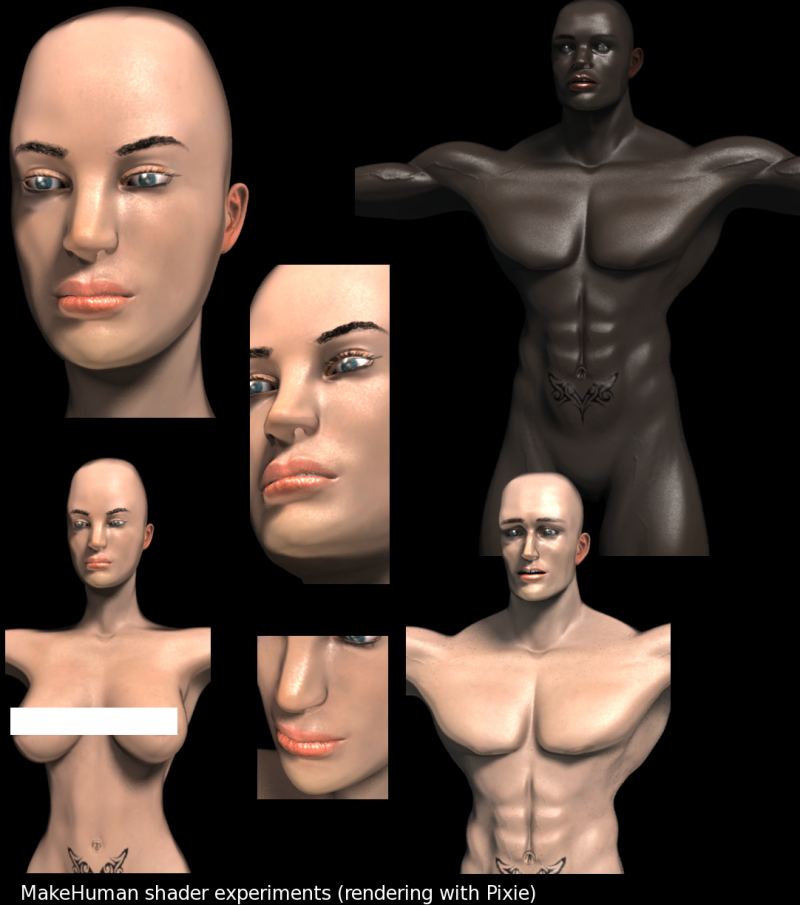
|Agradecer cuando alguien te ayuda es de ser agradecido|






 Citar
Citar